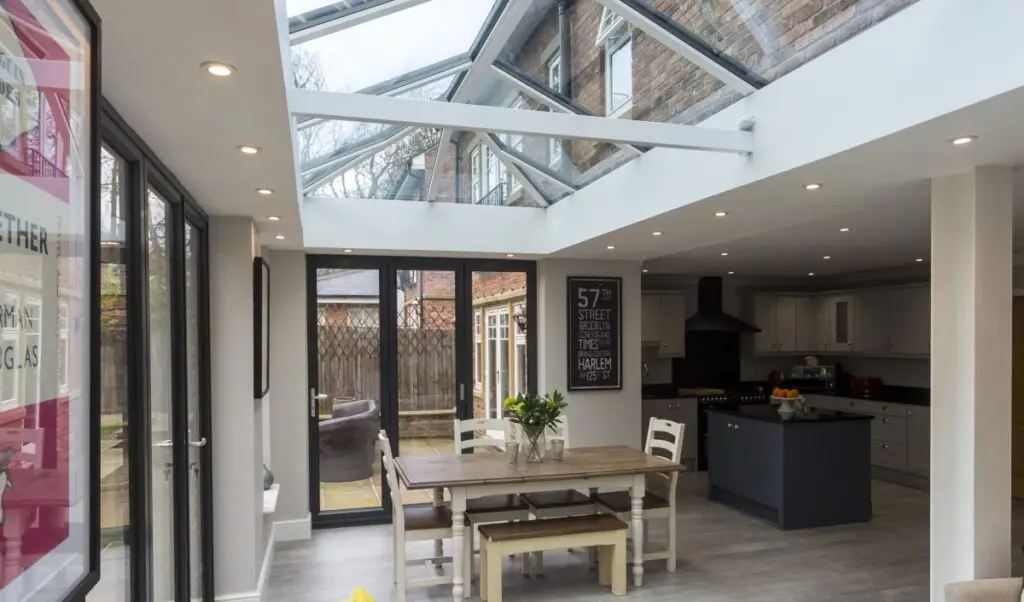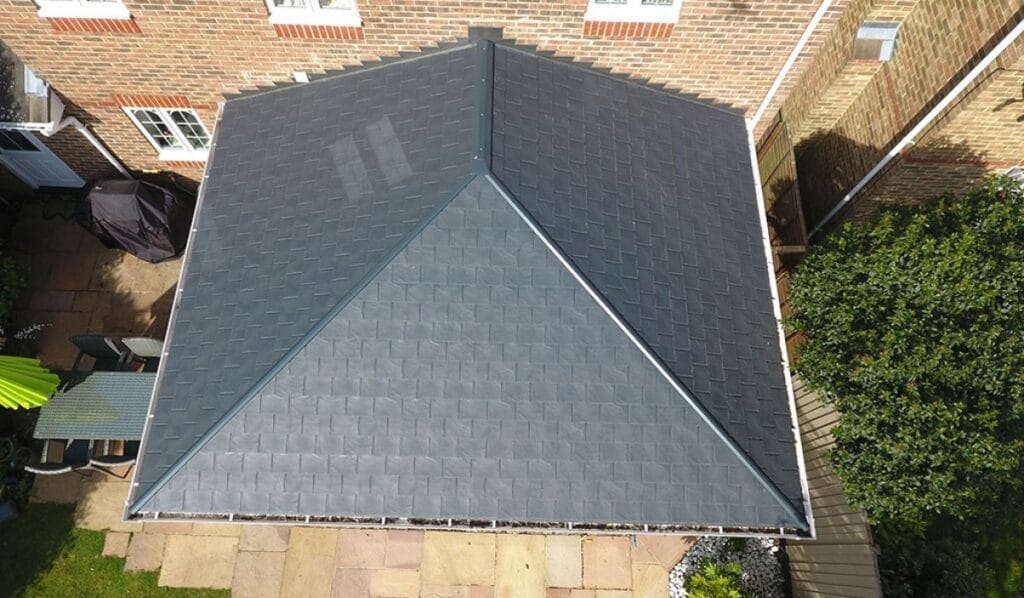- January 17, 2025
How Long Does It Take to Make Money Online? Part One:…

A Professional You Can Trust.
Robby Branson Builders Ltd
Affordable Conservatory
Upgrades
Affordable Upgrades and Energy-efficient Improvements
Transform Your Conservatory Into a Comfortable, Usable Space All Year Round
Affordable Conservatory
Upgrades
FANTASTIC RESULTS
Choose From Many
available Roof
Upgrades!
And How We Make a Difference
By Conducting A Full FREE Conservatory MOT We Can Identify Any Major Faults Or Concerns And Offer Several Affordable Upgrades And Smart Solutions for Conservatories
We don’t just upgrade existing conservatories — we can also build new standard or custom designs to modern specifications, including modular options that reduce on-site time, minimise disruption, and speed up the construction process.
Because Of Our Unmatched Expertise and Experience We Offer The Best Options To Improve Or Extend Your Existing Conservatory With affordable Conservatory Upgrades Designed For Year-round Comfort.
After completing your custom full MOT survey, we identify any problem areas, assess what you already have, listen to what you need, and then recommend the best upgrade methods or design solutions — all built around a plan that works for you.
Many conservatories were built over 20 years ago using basic 16mm polycarbonate roofing sheets, making them very inefficient. Lining or cloaking as it is more commonly known, is a cost-effective way to improve insulation and aesthetics without replacing your conservatory roof. From simple PVC cladding to fully framed, insulated finishes, it helps reduce heat loss and enhance comfort.
Unlike some providers who overlook structural impact, we assess every installation properly, ensuring safe, long-lasting results. Whether you’re enhancing an existing roof or upgrading polycarbonate, cloaking offers a smart, budget-friendly solution.
Not sure if cloaking is right for you? Contact us for expert advice on the best option for your conservatory.
60+ Years in Professional Construction.

Many conservatories were built to what were high standards over 20 years ago—well before the era of iPhones and Androids. Think about how much technology has advanced since then!
If you’ve upgraded your phone multiple times in the last two decades, isn’t it time your conservatory got an upgrade too
Remember when flip phones were the latest thing? That’s how old many conservatories are today. Imagine the difference an upgrade could make!

After completing your FREE MOT, we work closely with you to define your conservatories needs and explore the best options available. From there, we design, price, and plan your project to fit a pre-agreed schedule and budget. With us, it’s always on time and on budget—guaranteed!

1, Understand your needs.
2, Explore design options.
3, Create a tailored plan.
We Make a Difference
Our finished projects don’t just blend in — they stand out. With decades of hands-on experience in construction, we bring old-school precision, modern materials, and a problem-solving mindset to every job. From the structure to the sealant lines, every detail matters — and we make sure it’s done properly. We’re often called in to fix what others couldn’t — because we don’t just follow the standard approach. We find smart, practical solutions where others say, “It can’t be done — you need to buy a new one.” Real-world experience. Lateral thinking. Work you can trust.
The roof makes or breaks the room — so it pays to get it right. We guide you through all the main options — from classic glass and polycarbonate to solid tiled systems and hybrid styles that combine insulation and light. Older roofs can account for up to 80% of a conservatory’s heat loss or gain. Modern polycarbonate has come a long way. With multi-chamber design, better UV protection, and U-values close to modern glass, it’s now a cost-effective way to achieve comfort — without the cost of a full rebuild. Some roofs look good on paper but struggle in real-world conditions. Others offer lasting comfort, lower running costs, and genuine value — especially when matched to your home. We’ll explain the pros, cons, pricing, and performance in clear terms, so you can make the right choice.
Today’s windows and doors are miles ahead of what was fitted 10 or 20 years ago. Better thermal performance, tighter seals, improved security — and a real boost to how the room looks and feels. From affordable replacements to high-end upgrades, we offer all styles, including French, sliding, and full-width bifolds. Thanks to modern structural supports, large openings can now be installed safely — even in older conservatories. In some cases, part or all of the roof may need to be removed and reinstalled to fit the frame properly, but not always. Upgrading just the windows? In many cases, A-rated glazing units can be installed without new frames or changes to the existing roof. Stronger, warmer, better — and tailored to suit your space.
Cold floors and uninsulated walls can ruin an otherwise great space — and their impact is often overlooked. In many cases, they’re responsible for 15–20% of the heat loss (or gain) in a conservatory. We assess what’s already there and look at what can be improved — whether it’s installing thermal floor panels, recommending better floor coverings, or upgrading full-height or dwarf walls that were built years ago with no insulation at all. From simple retrofits to full reworks, we’ll guide you through the best options to make your conservatory feel like a real room — not just a bolted-on space.
Whether classic or custom, our new conservatories are designed for year-round comfort, lasting value, and tailored to suit your space and budget. In most cases, they fall under permitted development and don’t require building regulations — and even within a budget, they can still offer year-round warmth, comfort, and practical everyday use. And behind it all, the right foundation matters. Our steel base systems speed up the build, avoid messy groundworks, and work especially well on uneven or restricted sites. Strong, fast, and future-proof — they're often the smart way to start.
Leaking roof? Misted glass? Drafts around the frames? Too hot or too cold? Most conservatories develop issues over time — slipped panels, worn seals, broken gutter joints, or just ageing and outdated materials. We can even fix most settlement issues. We’ve seen (and fixed) it all. From a quick reseal to a full MOT, we’re here to help — without the hard sell. We also take care of the smaller fixes like faulty handles, broken locks, stiff hinges, or windows that no longer open or close properly. Start small. Fix the real problems first — and in an order that makes sense. Some items may have simply reached the end of their working life.
The weakest point in many older conservatories — and even some newer ones? The eaves. This narrow join between roof and frame is where drafts creep in, sheets slip, and moisture builds. Often, only a bit of trim and tape stands between your home and the elements. Modern eaves beams solve these issues with no cold bridging, better insulation, tighter seals, and more secure fixings. Some versions even include downlighting. Upgrade the beam, and the whole room improves. A smart, cost-effective upgrade that doesn’t interfere with future improvements.
The Goal is to Show You How to Improve Your Conservatory: Key Areas to Focus On
Just because it’s called a conservatory — and may not require planning permission or building regulations — doesn’t mean it can’t be built or upgraded to modern energy-efficient standards. A well-maintained conservatory can also enhance your home’s comfort, efficiency, and overall value.
When we conduct an MOT of your conservatory, we thoroughly assess all aspects of the existing structure. If the issues aren’t immediately obvious, we can use our thermal scanners or cameras to highlight potential problem areas — particularly cold or hot spots, air leakage, and possibly hidden damp patches. We also assess how heat may be escaping through glazing, the roof, walls, or floor — and whether there could be materials unintentionally bridging heat or cold into or out of the space. Even conservatories that look modern can underperform if they weren’t built with proper thermal planning or consideration. After the inspection, we explain any concerns in order of importance — typically starting with the factors that most affect heat loss or gain. This helps you focus on the improvements that offer the most benefit first. Please note that this order may not reflect cost, and we do not provide a written or digital report of our findings. Want to learn more about which thermal improvements would benefit you most? Click here →
Many older conservatories were built without proper oversight — and in some cases, by unscrupulous companies that didn’t police their own projects. Shallow foundations, poor-quality concrete, no damp-proofing, and very little structural planning were common. Many of these companies relied solely on subcontractors, who often cut corners to save money — and those shortcuts later show up in the form of uneven floors, twisted frames, or leaning walls. Over time, these problems can lead to movement. We’ve seen conservatories drop by as much as 75mm over just 3 metres — which can cause the frames and roof to shift, and windows or doors to jam or become impossible to close. You might spot cracks in the plaster, water pooling when mopping the floor, or a cold draught that no amount of sealing ever seems to fix. Other times, the signs are subtle — but the strain they place on the rest of the structure leads to major issues down the line. It’s one of the most common — and most overlooked — causes of long-term conservatory problems.
Two of the most common problem areas we find — and rarely well understood by homeowners. Box gutters are especially common on bungalow installations, where hipped-back designs are used due to height restrictions at the fascia and soffit level. They’re often poorly insulated, badly sealed at the joints with abutting materials, and prone to failure where they connect to standard plastic guttering sections. Leaks can travel yards from the original entry point, so it’s common for people to think the roof — or another area entirely — is leaking, when it’s actually the joint between the box gutter and the standard gutter behind it. Ridge beams are another weak spot. They’re not designed to be fully airtight, as they help manage internal condensation, but they often lack proper thermal breaks or any insulation at all. They’re a frequent source of draughts and water ingress — often dripping through a post-fitted light fixture or ceiling fan. Poor installation and complex geometry mean this area tends to flex, leak, or deteriorate over time.
Often overlooked — but absolutely critical. Poorly installed or degraded flashings are a major cause of leaks, especially where the conservatory meets the house walls. There are three main types of flashing used on conservatories: minimal embedded flashing, which usually goes just 30mm into the joints in the brick or blockwork; surface-mounted flashing, mostly using stick-on tapes with a limited lifespan — and even when correctly installed, these tend to break down within a few years; and finally, tray flashings, which pass fully through the wall to catch water running down the inside face of the outer leaf — as is expected in standard British construction methods. In many cases, a full tray flashing should have been used — not just a surface-mounted or shallow embed. But tray flashings cost more especially if you use the traditional code 4 lead. There are some very effective plastic versions but shortcuts are still common. Click below to read on.
.
With a wealth of experience in the construction industry and a track record of raising industry standards, we bring unparalleled expertise to every project. Our focus is on delivering innovative, high-quality solutions tailored to meet your unique needs

Lanterns and roof lights are a stylish way to brighten your conservatory.
Lanterns allow natural light to flood the space and come in various configurations to suit your needs. Modern designs are energy-efficient, with low-profile, thermally insulated ridges.
For a flatter look, skylights are a great alternative, offering similar choices in glass colours and frame finishes to match your conservatory.

An orangery is a stylish and functional addition to any home.
Modern and traditional designs often feature lantern-style roofs, maximizing natural light and avoiding additional roofing materials. Options like insulated perimeter pelmets with downlighting and sliding or bi-fold doors add comfort and versatility. For added elegance, multi-level cornices can hide gutters and enhance the overall look.

Upgrading your conservatory’s glass can make a significant difference.
Glazing technology has advanced tremendously over the last 20 years. Modern glass options for roofs and windows can greatly enhance the efficiency and comfort of your existing structure. With U-values reduced by nearly two-thirds in that time, upgrading your glass is an improvement worth considering.

Explore Modern Lightweight Roofing Systems for Improved Durability and Style
Upgrade your conservatory with innovative lightweight roofing systems designed for comfort and energy efficiency. These roofs offer improved insulation, reduced glare, and a sleek, stylish finish, making them a perfect choice for modern living.
We’re Redefining What a Conservatory Can Be
Most companies just push new roofs, windows, or full replacements. We don’t. We look at the whole picture — from minor repairs to major upgrades — and tailor solutions to suit your actual needs, including your budget, not just what’s easiest to sell. Whether it’s using today’s advanced materials for better energy performance or adding modern, proven upgrades to make the space more usable, we bring experience, fresh thinking, and practical options that work in the real world.
Stay updated with the latest insights, industry news, and expert tips for conservatory upgrades. Explore our blog for in-depth guides, exciting innovations, and exclusive special offers
We understand that upgrading or renovating a conservatory comes with many questions. Whether you’re considering a new lightweight roof, upgrading your glass, or converting your conservatory into an orangery, we’re here to provide clear, expert answers. Below, we’ve compiled some of the most common questions to help you make informed decisions about your conservatory project.
In most cases, conservatory upgrades, such as replacing glass or installing a new polycarbonate or glass roof, do not require planning permission. If you’re considering a lightweight tiled roof or structural changes, certain building regulation requirements may apply. Don’t worry—we’re experts at navigating these situations and will guide you through everything to keep the process smooth and hassle-free.
Yes, upgrading your conservatory can significantly reduce noise. The level of noise reduction depends on the extent of the upgrades chosen and the materials used—modern multi-layered polycarbonate panels, acoustic glass, insulated roofing, and resealing techniques help block external sounds, making your conservatory a quieter, more comfortable space.
he lead time for a conservatory upgrade depends on several factors, including the scope of work undertaken, material availability, and our current scheduling demands if off site manufacturing is required. While some upgrades, such as glass replacements, can be completed relatively quickly, full roof upgrades, wall and widow or structural modifications may take longer. And no situations like Covid in play.
On average, projects are scheduled within 3 to 6 weeks from the initiation of the contract, but we always aim to complete work efficiently while maintaining the highest standards. If you have a specific timeframe in mind, let us know—we’ll do our best to accommodate your needs.
No, we aim to minimize any damage to your garden or driveways during the construction or installation processes. Our experienced team uses protective measures, such as ground covers and careful equipment placement, to ensure your landscaping remains as undisturbed as possible. This is especially true even for new or major refurbishments when using the modular systems now available as most of the fabrication is carried out off-site. And after completing the upgrade, we conduct a thorough clean-up to remove any debris or leftover materials and leave your garden tidy and ready to enjoy
Keeping your conservatory in top condition after an upgrade is relatively straightforward. Especially if you choose the self-cleaning glass option for your roof or windows. Then only an occasional final clean is recommended. Past this requirement any maintenance should be the same as your main house. But for lightweight tiled roofs, and some of the other roof designs with hidden gutters we do suggest that you ensure gutters and drainage systems remain clear of debris to avoid water build-up. If your upgrade includes specialized materials, like acoustic glass or thermal coatings, we’ll provide specific guidance per the manufacturer to ensure their longevity.
By following these simple steps, you can enjoy a beautiful, functional conservatory for years to come.
Robby Branson Builders Ltd. Unit 20 Sterte 2 Ind.. Estate, 145 Sterte Rd Poole. BH15 2AF
Robby Branson Builders Ltd. 124 City Road London, EC1V 2NX United Kingdom
robbyuk2010@gmail.com
After Hours or Regular for Your Free CoMoT (conservatory Mot)